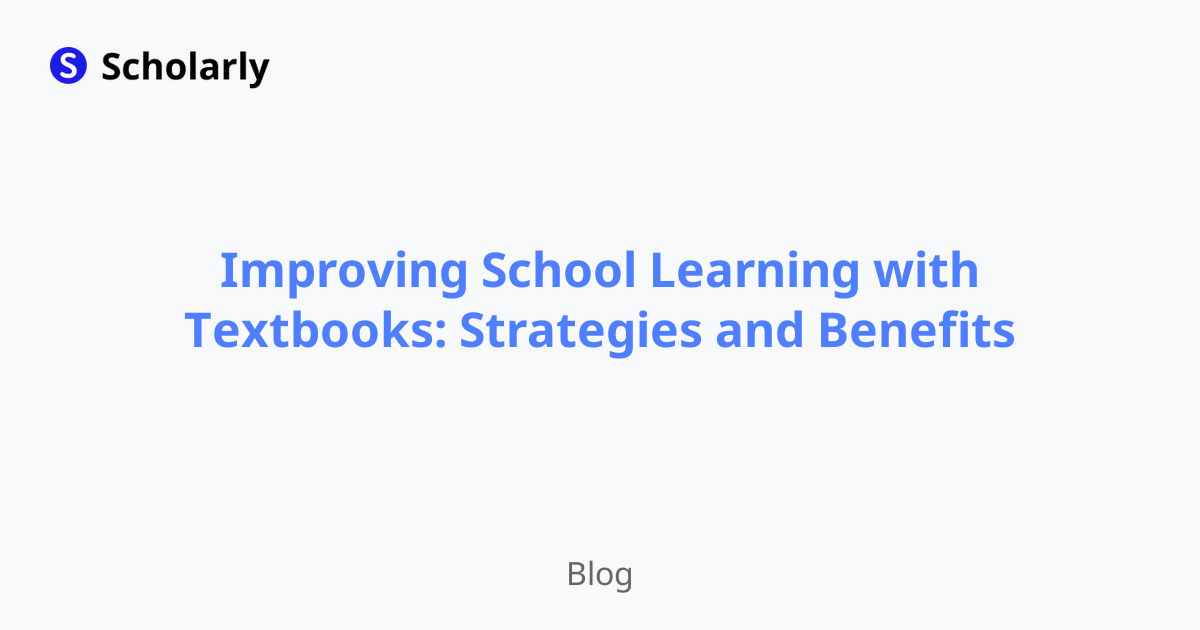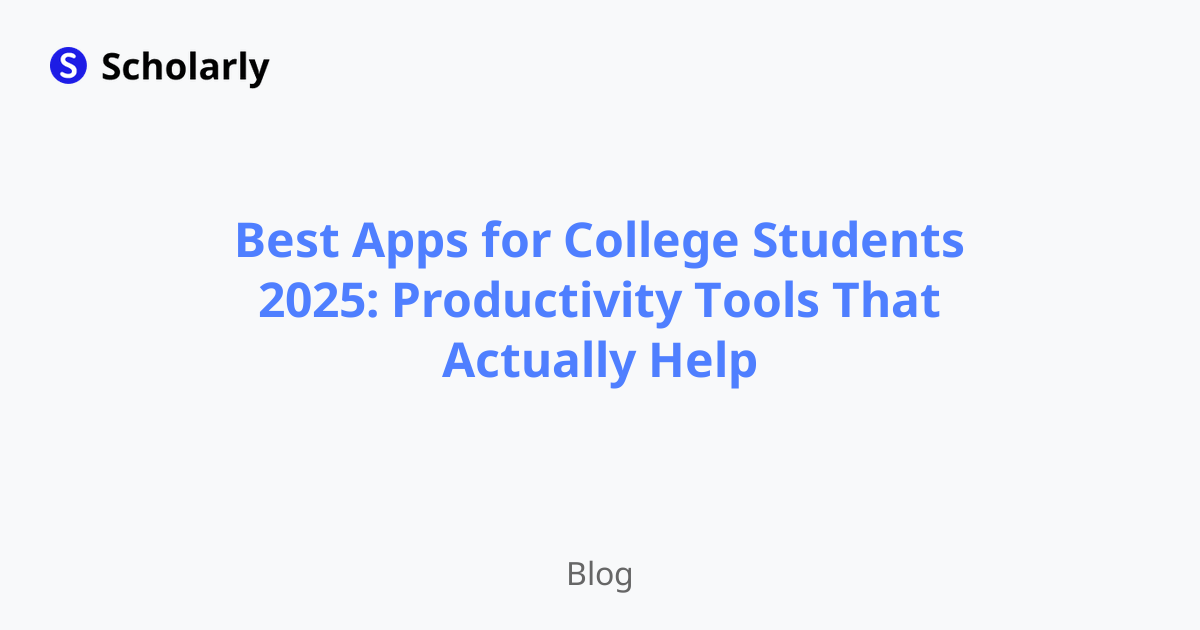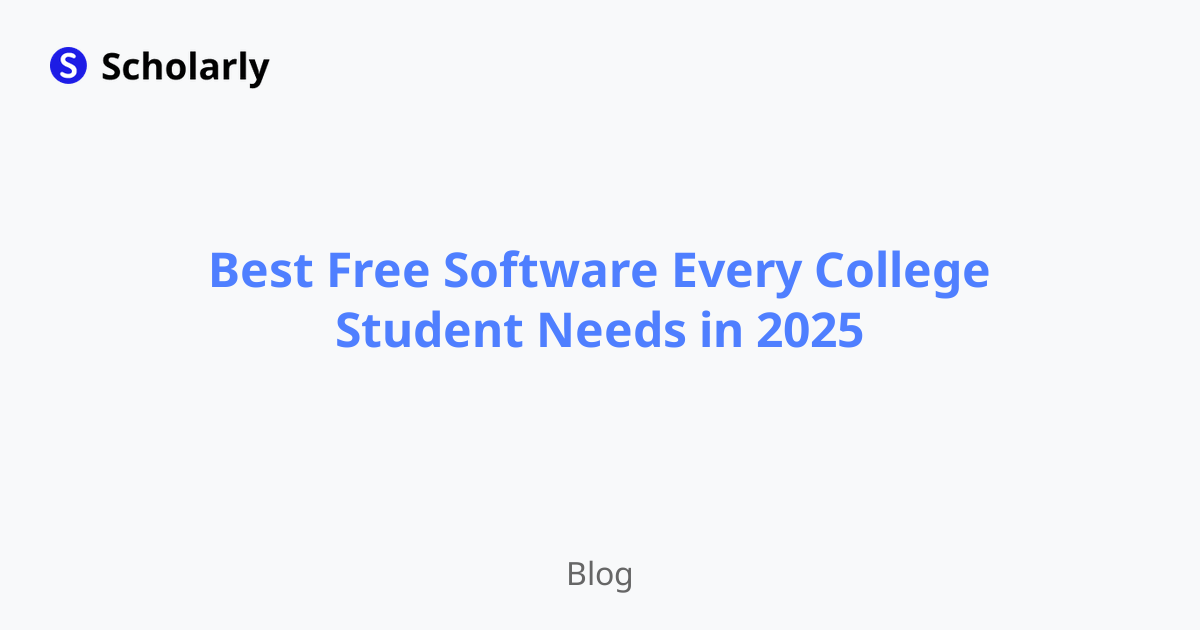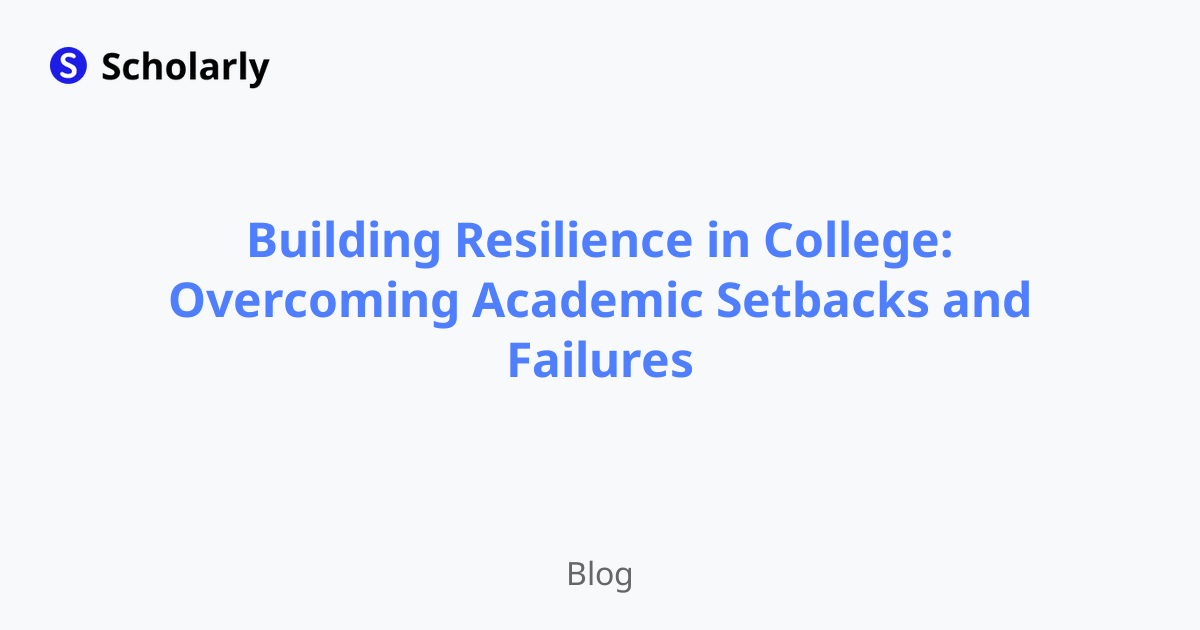Improving School Learning with Textbooks: Strategies and Benefits
Discover effective strategies and the numerous benefits of using textbooks to enhance school learning. Explore the history, current state, and future applications of textbooks. Learn about best practices, pros and cons, and common techniques. Find out how AI can revolutionize textbook learning. Discover potential online apps that optimize learning with textbooks.

Introduction
Welcome to our comprehensive guide on improving school learning with textbooks! In this article, we will explore the strategies and benefits of using textbooks to enhance learning in educational settings. We will delve into the history, current state, and future applications of textbooks, and discuss best practices, pros and cons, common techniques, and the impact of artificial intelligence (AI) on textbook learning. Additionally, we will introduce potential online apps that optimize learning with textbooks.
History
Past State
In the past, textbooks played a pivotal role in classroom instruction. They were the primary source of information for students, providing structured content and facilitating knowledge acquisition. In the pre-digital era, textbooks were often the only educational resource available, creating a standardized learning experience for students. However, they were limited by their static nature and the lack of interactive elements.
Current State
Textbooks continue to be widely used in schools and educational institutions. However, the advent of digital technology has transformed their format and functionality. Today, textbooks are available in both physical and digital forms, offering multimedia features, interactive exercises, and online resources. They enhance learning by providing engaging content, facilitating self-paced learning, and promoting critical thinking skills. Digital textbooks also enable easy updates, reducing the need for frequent reprints.
Future State
Looking ahead, textbooks are expected to undergo further transformations. With advancements in AI and machine learning, textbooks will become more interactive and personalized. AI-powered textbooks will adapt to the learning styles and abilities of individual students, offering tailored content and exercises. They will incorporate immersive technologies like virtual reality (VR) and augmented reality (AR), providing students with realistic and hands-on learning experiences. AI will also enable real-time feedback and assessment, enhancing the effectiveness of textbook learning.
Benefits
Using textbooks in school learning offers numerous benefits. Let's explore some of the key advantages:
Comprehensive Coverage: Textbooks provide a comprehensive overview of a subject, covering essential topics, concepts, and theories.
Structured Learning: Textbooks offer a structured approach to learning, presenting information in an organized manner and helping students grasp complex ideas.
Supplemental Resources: Textbooks often include supplementary resources such as practice questions, exercises, and case studies that reinforce learning.
Offline Accessibility: Physical textbooks allow students to study without the need for internet access, making them accessible in all learning environments.
Critical Thinking Development: Textbooks encourage critical thinking skills by providing students with diverse perspectives, case studies, and problem-solving scenarios.
Significance
The significance of textbooks in school learning cannot be overstated. They serve as a foundation for knowledge acquisition, offering a structured and reliable source of information. Textbooks provide a common learning experience for all students, ensuring consistency and uniformity in curriculum implementation. They also help bridge the digital divide by providing offline learning materials that are accessible to students without internet connectivity. Additionally, textbooks promote independent study and self-directed learning, fostering a lifelong love for learning.
Best Practices
To maximize the benefits of textbook learning, here are some best practices to consider:
Pre-Reading: Before diving into a chapter, skim through the content to get an overview and activate prior knowledge.
Annotation: Take notes, underline key points, and highlight important sections to enhance comprehension and retention.
Active Reading: Engage with the text by asking questions, making connections, and summarizing information in your own words.
Review and Reflection: Regularly review previously covered material and reflect on what you have learned to reinforce understanding.
Supplemental Resources: Utilize additional resources like practice exercises, online tutorials, and study guides to enhance learning.
Pros and Cons
Textbooks have both advantages and disadvantages. Let's examine some of the pros and cons:
Pros
Structured Content: Textbooks provide a structured framework for learning, presenting information in a logical and organized manner.
Comprehensive Coverage: They offer comprehensive coverage of a subject, ensuring that all key topics and concepts are addressed.
Offline Access: Physical textbooks do not require an internet connection, allowing students to study anywhere, anytime.
Permanent Reference: Textbooks can serve as a permanent reference material, providing access to information even after the completion of a course.
Reliable and Credible: Well-crafted textbooks are written by experts in the field and undergo rigorous review, ensuring their credibility and accuracy.
Cons
Expensive: Textbooks can be costly, especially when multiple textbooks are required for different subjects.
Limited Interactivity: Traditional textbooks lack interactivity and multimedia elements found in digital resources.
Outdated Information: Printed textbooks may become outdated, particularly in fast-changing fields where new research and developments constantly emerge.
Heavy and Bulky: Physical textbooks can be heavy and burdensome to carry, especially when students have multiple textbooks.
Lack of Personalization: Textbooks may not cater to individual learning styles and preferences, potentially limiting engagement and motivation.
Comparison
When choosing textbooks, it's important to consider different options based on subject area and educational level. Here are a few popular textbooks and their features:
- Mathematics Textbook
This comprehensive mathematics textbook covers topics from basic arithmetic to advanced calculus. It includes interactive exercises, step-by-step solutions, and real-world applications.
- Science Textbook
Designed for middle school students, this science textbook explores various scientific concepts through hands-on experiments, stunning visuals, and engaging case studies.
- History Textbook
Covering major historical events and civilizations, this history textbook incorporates primary sources, multimedia resources, and thought-provoking discussion questions.
- Language Arts Textbook
This language arts textbook focuses on reading, writing, and critical thinking skills. It includes literary works, writing prompts, and grammar exercises.
- Social Studies Textbook
Exploring geography, culture, and global issues, this social studies textbook features interactive maps, multimedia content, and collaborative activities.
Methods
To make the most of textbook learning, consider the following methods:
SQ3R Method: Survey, Question, Read, Recite, Review. This method involves previewing the material, generating questions, reading actively, summarizing key points, and reviewing regularly.
Cornell Note-Taking Method: Divide your note-taking page into three sections: questions/key ideas, notes, and a summary. This method promotes active engagement, organization, and review.
Mind Mapping: Create visual diagrams to connect key ideas, concepts, and relationships from the textbook. Mind maps enhance understanding, memory, and creativity.
Group Study: Form study groups with classmates to discuss textbook content, clarify doubts, and reinforce learning through collaborative activities.
Practice Questions: Solve practice questions and exercises provided in the textbook to reinforce understanding and test your knowledge.
AI Impact
AI has the potential to revolutionize textbook learning, offering several benefits, including:
AI Applications
AI can be applied to textbook learning in various ways:
Personalized Learning: AI algorithms can analyze students' learning patterns and preferences to provide personalized recommendations and adaptive content.
Content Generation: AI can generate dynamic and interactive textbook content, enriching the learning experience through simulations, virtual labs, and multimedia resources.
Intelligent Tutoring: AI-powered virtual tutors can assist students with personalized explanations, feedback, and guidance, fostering independent learning.
AI Techniques
AI techniques employed in textbook learning include:
Machine Learning: ML algorithms can analyze student data and optimize content delivery based on individual learning needs.
Natural Language Processing: NLP enables intelligent text understanding and generation, enabling AI-powered textbooks to interact with students in a conversational manner.
Computer Vision: Computer vision technologies can enhance textbook visuals, enabling immersive experiences through AR and VR.
AI Benefits
AI-powered textbook learning offers several benefits:
Personalization: AI adapts content to individual needs, pace, and learning preferences, promoting engagement and motivation.
Efficiency: AI automates administrative tasks, such as grading and progress tracking, allowing teachers to focus on personalized instruction and feedback.
Data-Driven Insights: AI analyzes student data to reveal patterns, identify areas of improvement, and inform instructional decisions.
Challenges
While AI has immense potential in textbook learning, there are challenges to overcome:
Ethical Considerations: AI raises ethical questions regarding student privacy, data security, and algorithmic bias in personalized learning.
Implementation Hurdles: Integrating AI-powered textbook learning requires infrastructure, training, and guidance for both educators and students.
Technical Limitations: AI technologies may have limitations in understanding complex content, context, and nuanced learning needs.
Equity and Access: AI-powered textbook learning should be accessible to all students, bridging the digital divide and ensuring equitable education opportunities.
Potential Online Apps
Several online apps can enhance textbook learning. Here are a few examples:
1. Scholarly
Scholarly is an AI-powered learning platform that offers AI-generated flashcards, text completion, auto-complete, and interactive study sessions. It helps students optimize their learning experience with textbooks by providing automated study aids and personalized content.
2. Quizlet
Quizlet is a widely-used online learning tool that allows students to create and study flashcards, take practice quizzes, and join collaborative study groups. It offers a vast repository of user-generated content across various subjects.
3. Khan Academy
Khan Academy provides a library of educational resources, including instructional videos, practice exercises, and personalized learning journeys. It covers a wide range of subjects and is accessible to students of all ages.
4. CK-12
CK-12 offers digital textbooks, interactive simulations, and adaptive practice resources. It provides customizable learning materials for K-12 education, covering various subjects and aligning with different curriculum standards.
5. OpenStax
OpenStax provides free, peer-reviewed textbooks for college and high school courses. Its open educational resources are accessible online and available for download in multiple formats.
Conclusion
Textbooks play a crucial role in enhancing school learning. They provide comprehensive coverage, structured content, and critical thinking opportunities. Despite the availability of digital resources, textbooks continue to offer unique benefits. AI holds immense potential in revolutionizing textbook learning through personalized content, intelligent tutoring, and data-driven insights. Embracing best practices, understanding the pros and cons, and leveraging online apps can further optimize the learning experience with textbooks. So, let's embrace the power of textbooks and empower students on their educational journey!
Try Our Popular AI Study Tools
Transform your study materials into interactive learning experiences with our most popular AI-powered tools:
PDF to Flashcards
Convert lecture notes and textbooks into study flashcards instantly
Text to Flashcards
Turn any text or notes into comprehensive flashcard sets
Image to Flashcards
Convert diagrams and handwritten notes into digital flashcards
YouTube to Flashcards
Generate flashcards from educational video content



